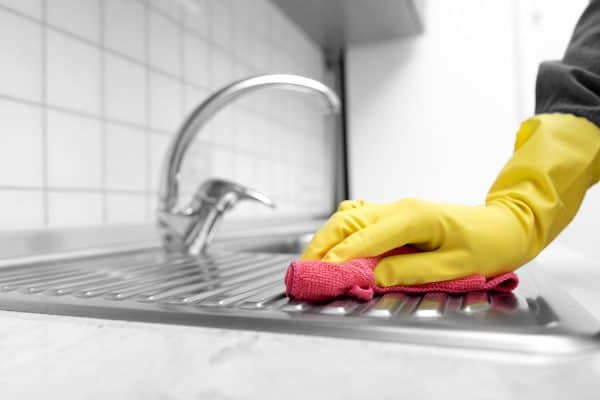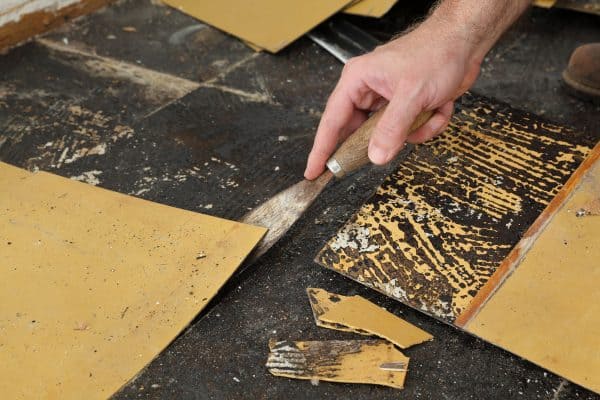Many helpful adhesive-removing products aid in household projects and everyday cleaning. So many, it can be challenging to know which one will get the job done faster and better. Luckily, we've done plenty of research and have the answers for you! Let's discuss.
Depending on your specific needs, Goo Gone and Acetone are effective products. Goo Gone is typically used for removing easier residues from things like tape.
You can use acetone for more stubborn substances like dried paint and glue.
Both Goo Gone and Acetone have pros and cons, so you must be careful when deciding which to use. There are many factors to consider with each of them:
- Material the of item
- Surroundings
- Pets or children nearby
- Your project goal
Throughout this post, we will look into the good and bad of both these products and a few other common adhesive removers.

Goo Gone Products
Goo Gone is a citrus-based adhesive remover for sticky residue from things like tape, stickers, and gum. It can also remove certain stains like crayon marks from walls or floors.
This product is versatile in how you can use it and works on many types of surfaces and fabrics. There are even different Goo Gone products, depending on what you need!
Though all Goo Gone products are for cleaning adhesive residue or grease, there are different products specifically for specific tasks.
The original liquid and spray gel of Goo Gone is for typical usage around the house. It removes many kinds of residues and cleans difficult areas like windowsills.
We may include affiliate links and curated AI content to highlight top design styles.
Other Goo Gone products include:
- Automotive Degreaser
- Grout and Tile Cleaner
- On-The-Go Goo Gone Pen
- Goo Gone Wipes
- Kitchen Degreaser
For more ideas on kitchen degreasers, check out 6 Best Degreasers For Kitchen Cabinets Before Painting.
What Are The Benefits Of Using Goo Gone?
One of the benefits of Goo Gone is the citrus in the solution. Because of it, this product has a more pleasant smell than acetone and other adhesive removers.
Though it has a more tolerable scent, it is still important to properly ventilate the area you are working in when using this product, as it can still be dangerous to breathe in fumes.
Another perk of Goo Gone is that the ingredients are gentle enough to use on various surfaces and fabrics. Because of this, you can worry less about if Goo Gone will damage your belongings and focus more on cleaning the mess.
Lastly, Goo Gone is beneficial because you don't have to use very much of it at a time.
A small amount of the solution is usually more than enough to get the job done. This means a bottle of Goo Gone can last for a decent amount of time before you will need to purchase another one.
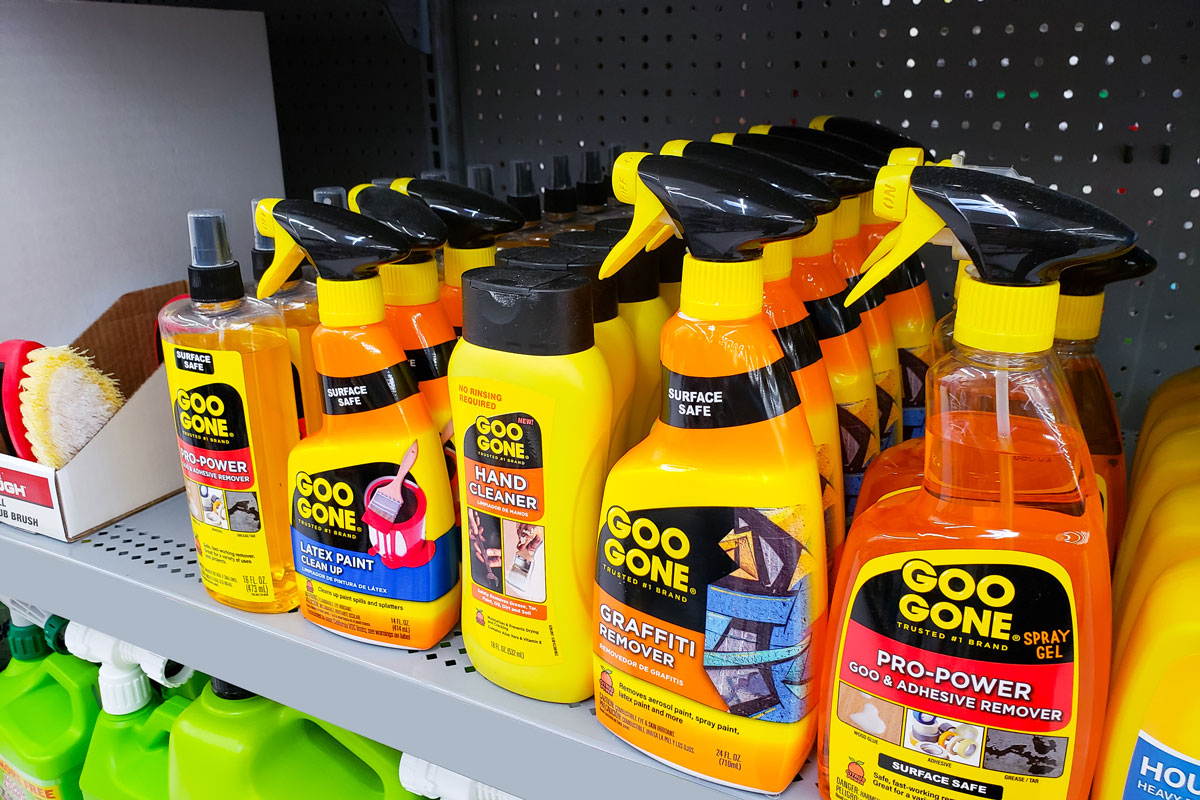
Are There Disadvantages To Using Goo Gone?
Though Goo Gone has great benefits as an adhesive remover, there are a few disadvantages to note. One of them is that Goo Gone tends to leave a slightly greasy residue after cleaning an area.
Though one paper towel is enough to wipe it away, it is an extra step that may not occur with other adhesive removers.
Another disadvantage is even though the solution is less chemically harsh than removers like acetone, it is still a toxic product. It will need to be kept out of reach of pets and children.
When using Goo Gone, it is safer to work with gloves on. Unless it is a formula specifically for use on skin, it may cause skin irritation.
Lastly, though Goo Gone works great on many different surfaces, it appears not to be the best product for unfinished wood. If you are working with unfinished wood or need to remove paint from wood, it may be better to use something else, as Goo Gone can seep into the wood.
This can cause discoloration in the wood you are working with and make it harder to paint over it.
Acetone
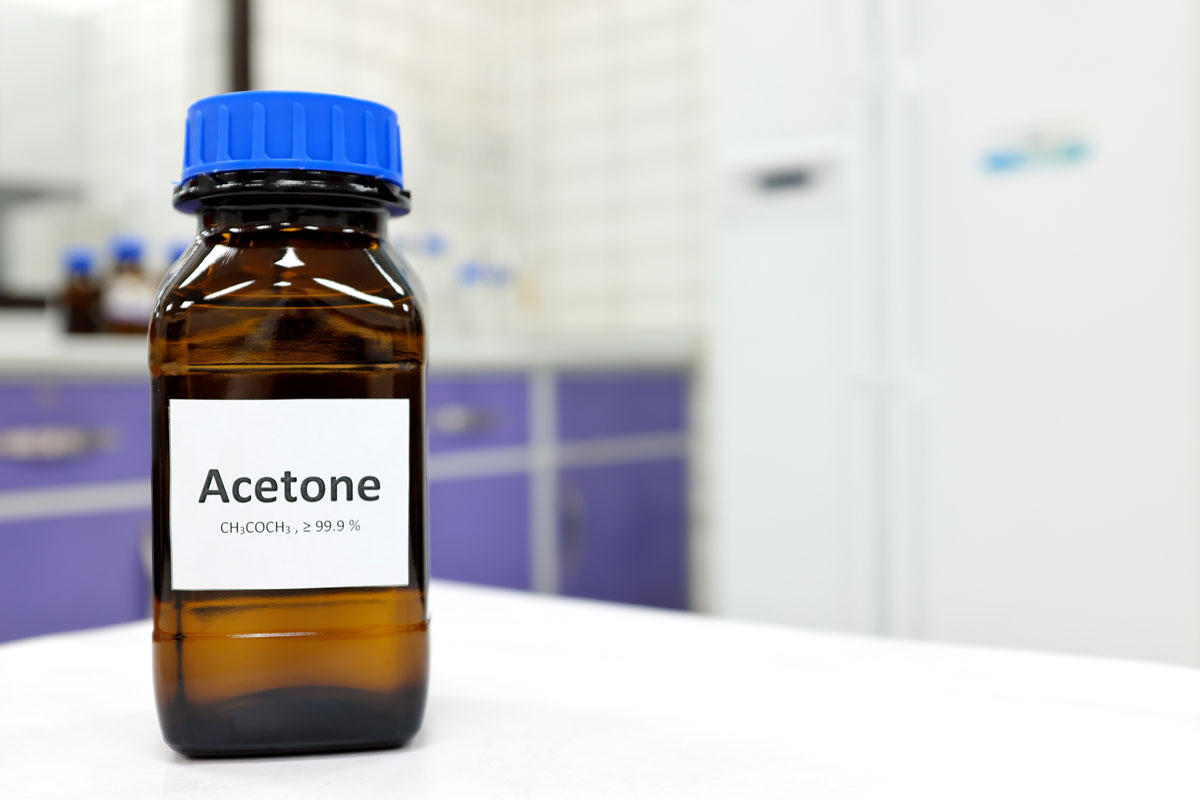
Acetone is a more potent adhesive remover and cleaner than Goo Gone but also works well for simpler messes. There are many pros and cons of using pure acetone or products with acetone as the main ingredient.
Pure acetone can commonly be found in nail polish removers and paint thinners.
Check this Acetone on Amazon here.
What Are The Benefits Of Using Acetone?
As previously mentioned, acetone can remove and clean tougher substances than Goo Gone. It works very well on removing things like paint, tar, oil, and strong glues.
This makes it essential to keep on hand when working with such substances. However, if you rarely interact with such things, you may not benefit much from keeping acetone in the house.
A significant difference between acetone and Goo Gone is that acetone dries much quicker and won't leave any residue.
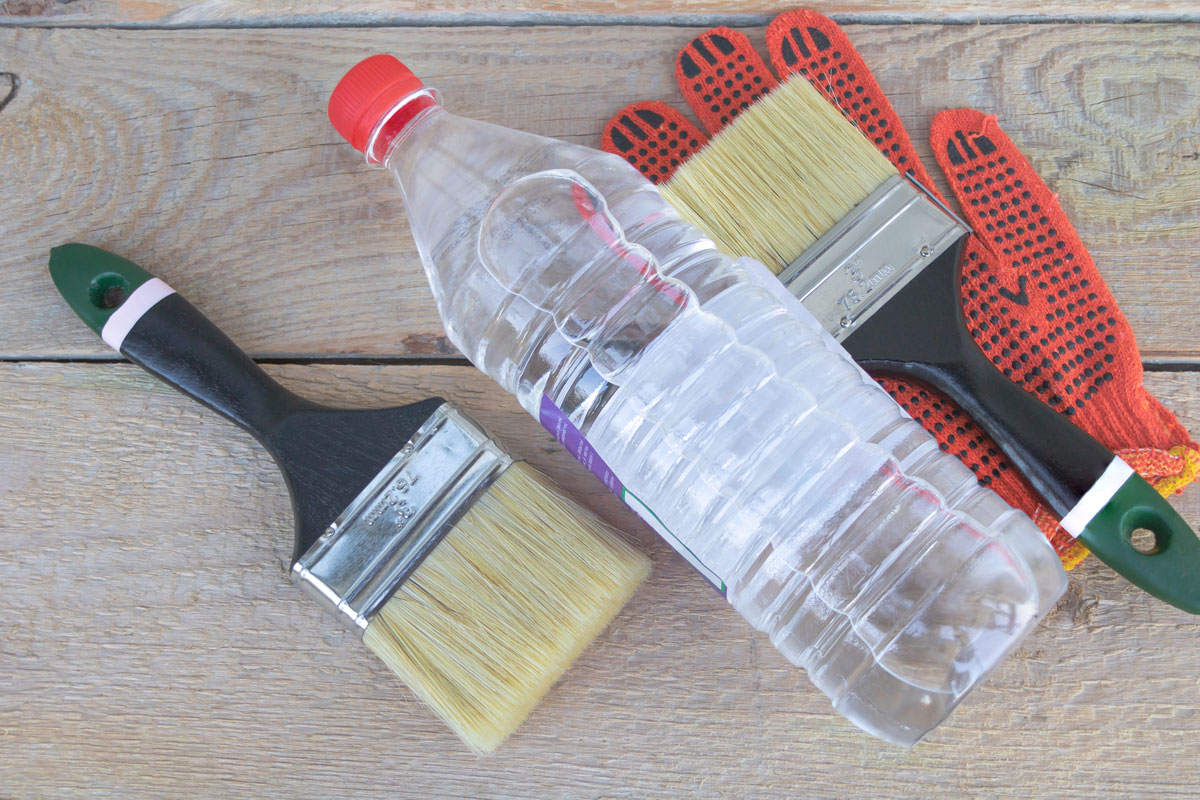
This makes acetone slightly easier to work with because you won't have to wipe back over an area to remove the cleaner after the mess is taken care of.
Thirdly, acetone works on many different surfaces and materials. It works better than Goo Gone on materials such as wood and metal because it does not leave residue or seep into the wood.
However, it will damage any paint that may be present on these materials, so make sure to be careful if you wish to keep the paint intact.

Acetone Disadvantages
Acetone is a strong chemical liquid that lacks the citrus smell Goo Gone has. This makes it a more unpleasant product to work with and unsafe to use in areas with poor ventilation.
Breathing in acetone fumes can quickly cause side effects such as:
- Headaches
- Confusion
- Racing pulse
- Nausea
- Unconsciousness
In addition to this, acetone is not effective to use on plastic items. Though certain plastics are resistant to acetone, it can cause damage to other plastics.
Acetone can eat through these plastics and make the item irreparable. Make sure to thoroughly check the type of plastic the item is made of if you plan to use acetone on it.
Even though a perk to acetone is how well it works as a paint thinner, this can also be bad. When you need to clean items with paint, it may be safer to use a different product.
Acetone will easily eat through what you mean to clean and damage the paint before you realize it. This can even happen with car paint.
Goo Gone Vs. 3M Adhesive Remover

Another option to consider is a 3M Adhesive Remover. This product may be the answer you're looking for if you want something between Goo Gone and acetone.
Being a non-abrasive solution, it is more similar to Goo Gone than acetone. However, despite similarities between the two products, some differences stand out.
While Goo Gone is citrus-based, 3m adhesive remover contains a blend of petroleum solvents. This makes it easier for 3m adhesive removers to dissolve sticky residues.
All you have to do to use this is spray it on the item and then wipe it off. On the other hand, Goo Gone often comes with a scraping tool to use with the solution.
3m adhesive remover is also tough enough to handle more residue cleaning on cars than Goo Gone.

But it is also more gentle than acetone and is less likely to damage the paint. As long as you do not press too firmly or take too long when wiping off the solution, no damage will occur to the paint.
Summary
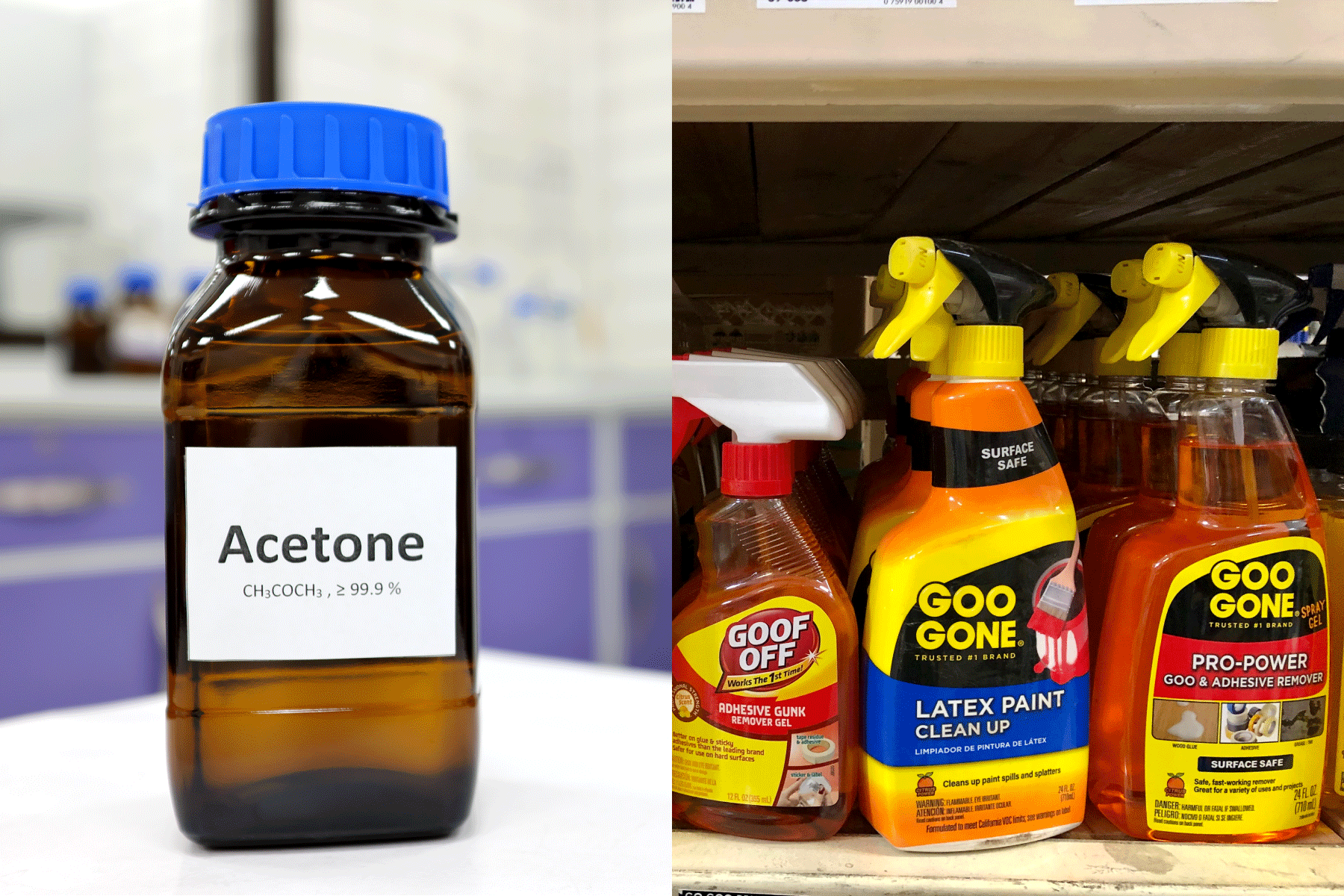
When trying to pick the best adhesive removers for your needs, there are several things from this post to remember.
Goo Gone is great for smaller jobs, acetone is excellent for tough substances, and 3M adhesive remover is perfectly between the two.
All have specific strengths and weaknesses to consider before purchasing.
If you are gearing up for a project involving adhesives, you may also enjoy:



